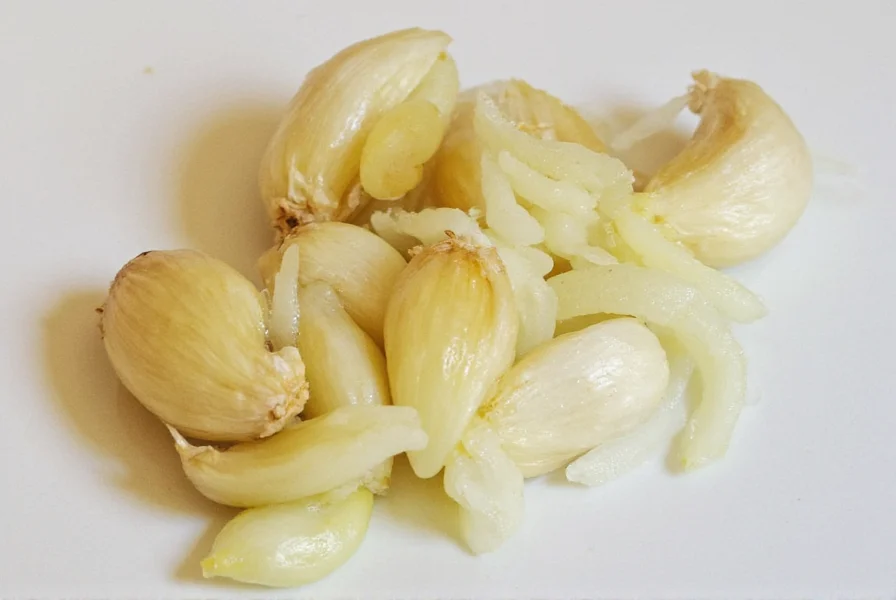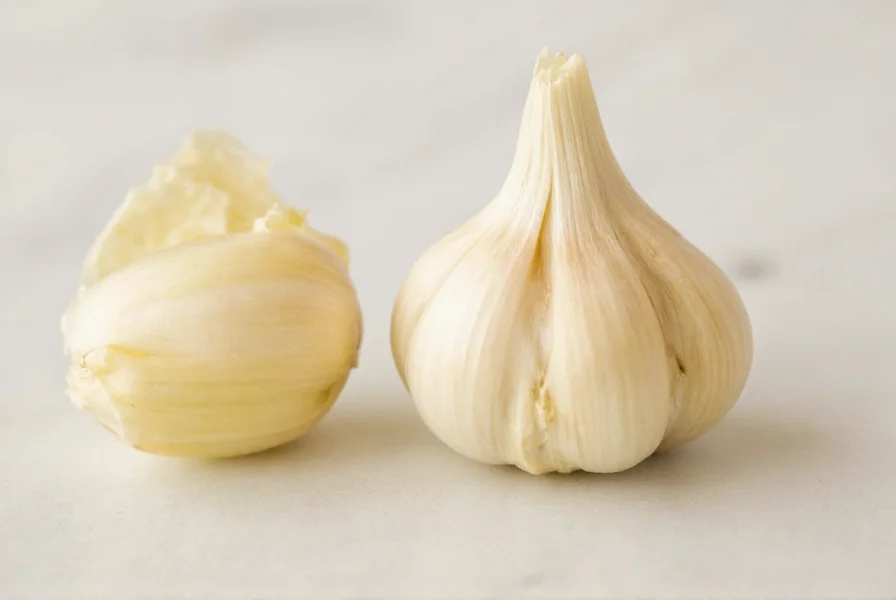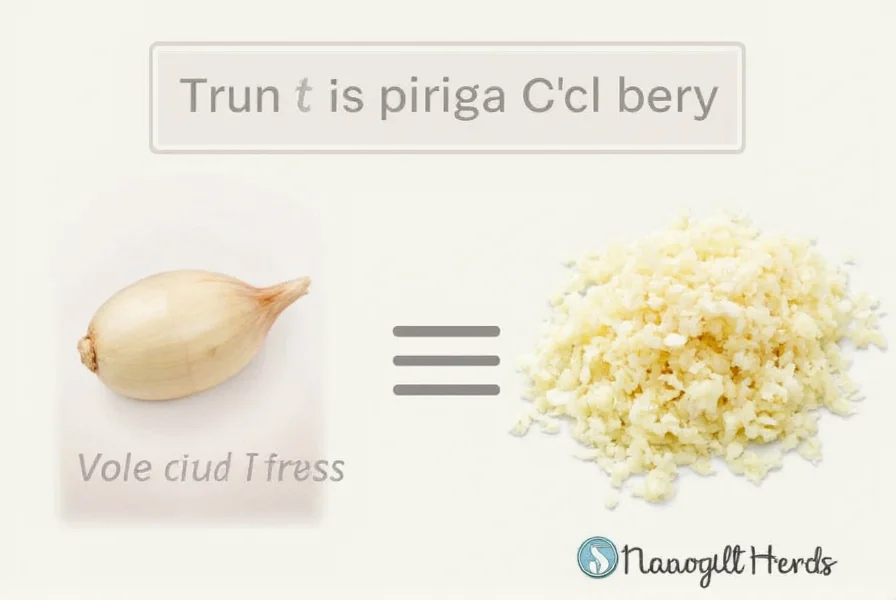When following recipes that specify minced garlic rather than whole cloves, knowing the exact conversion prevents flavor imbalances in your dishes. The relationship between fresh garlic cloves and their minced equivalent is essential knowledge for both novice cooks and experienced chefs.
Understanding Garlic Measurements
Garlic measurements can vary based on clove size, which affects your recipe's final flavor profile. While the standard conversion remains consistent, recognizing these variables helps achieve culinary perfection.

Garlic Conversion Chart
| Whole Garlic Cloves | Minced Garlic Equivalent | Garlic Powder Equivalent |
|---|---|---|
| 1 clove | 1/2 teaspoon | 1/8 teaspoon |
| 2 cloves | 1 teaspoon | 1/4 teaspoon |
| 3 cloves | 1 1/2 teaspoons | 3/8 teaspoon |
| 6 cloves | 1 tablespoon | 3/4 teaspoon |
| 12 cloves | 2 tablespoons (1/8 cup) | 1 1/2 teaspoons |
Factors Affecting Garlic Measurements
Several variables influence the precise conversion from whole cloves to minced garlic:
Clove Size Variations
Garlic cloves range from small to extra-large. When a recipe calls for "1 clove of garlic," it typically assumes a medium-sized clove weighing approximately 4-7 grams. Smaller cloves might yield closer to 1/3 teaspoon minced, while larger ones can produce up to 3/4 teaspoon.
Mincing Technique
Your mincing method affects the final volume. Finely minced garlic packed tightly into a measuring spoon contains more garlic than loosely packed minced garlic. For consistent results, gently press minced garlic into the measuring spoon without compacting it excessively.
Moisture Content
Freshly minced garlic contains moisture that can affect measurement. As garlic sits, it releases liquid, potentially increasing the measured volume slightly. For precise baking applications, consider this when converting measurements.

Substituting Between Garlic Forms
Understanding how to substitute between different garlic preparations prevents recipe failures:
Fresh Garlic to Jarred Minced Garlic
When substituting jarred minced garlic for fresh, use a 1:1 ratio for small quantities. However, jarred garlic often contains preservatives and may have a slightly different flavor profile. For best results in delicate dishes, fresh garlic remains preferable.
Garlic Powder Conversion
For those using garlic powder instead of fresh, remember that 1/8 teaspoon garlic powder equals one garlic clove. Garlic powder provides convenience but lacks the complexity of fresh garlic's flavor compounds.
When Precision Matters in Garlic Measurement
Certain culinary applications demand precise garlic measurements:
- Delicate sauces - Where garlic flavor should complement rather than dominate
- Baking applications - Particularly in breads and savory pastries
- Canning and preserving - Where proper acid balance affects food safety
- Professional recipe development - For consistent results across multiple batches
For everyday cooking, approximate measurements usually suffice. The aromatic compounds in garlic blend well with other ingredients, making minor variations unlikely to ruin most dishes.
Practical Tips for Garlic Measurement
Implement these techniques for better garlic measurement accuracy:
- Use a microplane grater for the most consistent minced garlic texture
- Measure minced garlic over wax paper for easy transfer to your recipe
- When in doubt, start with less garlic—you can always add more but cannot remove it
- For roasted garlic, remember that 1 roasted clove equals approximately 1 teaspoon
- Freeze excess minced garlic in ice cube trays for future use
Common Questions About Garlic Measurements
How much jarred minced garlic equals one fresh clove?
One fresh garlic clove equals approximately 1/2 teaspoon of jarred minced garlic. However, jarred garlic often contains preservatives and may have a slightly milder flavor, so you might need to adjust to taste depending on the brand and your recipe requirements.
Does the size of garlic cloves significantly affect recipe outcomes?
Yes, garlic clove size can significantly impact flavor intensity. Small cloves (3-4g) yield about 1/3 teaspoon minced, medium cloves (5-6g) yield 1/2 teaspoon, and large cloves (7g+) can produce up to 3/4 teaspoon. For critical recipes, weighing cloves provides the most consistent results.
Can I substitute garlic paste for fresh minced garlic?
Yes, substitute garlic paste for fresh minced garlic using a 1:1 ratio. Garlic paste typically contains citric acid as a preservative, which may slightly alter flavor in delicate dishes. For most cooking applications, the substitution works well without adjustment.
How do I measure minced garlic accurately?
For accurate measurement, finely mince the garlic, then gently spoon it into a measuring spoon without packing it down. Level off excess with a straight edge. For small quantities (1/4 teaspoon or less), consider using a garlic press directly over your recipe to avoid measurement errors.
Does roasting garlic change its measurement equivalent?
Yes, roasting significantly changes garlic's volume and texture. One roasted garlic clove yields approximately 1 teaspoon of soft, caramelized garlic—double the volume of raw minced garlic. This is due to moisture loss during roasting and the softer texture that allows more garlic to fit in the same space.











 浙公网安备
33010002000092号
浙公网安备
33010002000092号 浙B2-20120091-4
浙B2-20120091-4